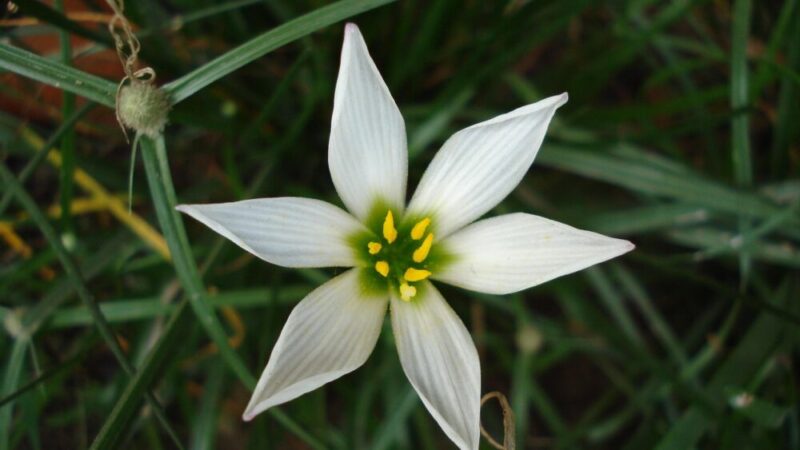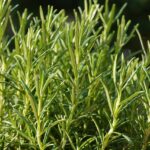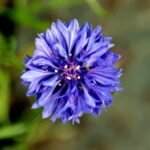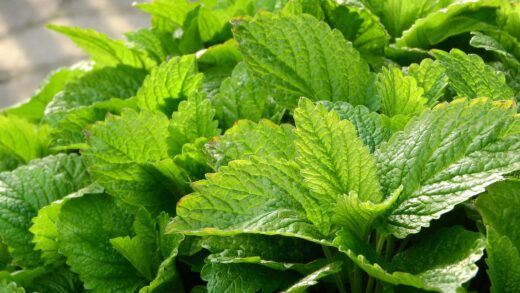Watering and fertilizing the garden star-of-bethlehem

Providing the right amount of water and nutrients is fundamental to cultivating a healthy and floriferous patch of garden star-of-bethlehem. This resilient bulb has specific, yet straightforward, requirements that are closely tied to its annual growth cycle. Understanding when to provide moisture and when to withhold it is perhaps the most critical aspect of its care. During its active growth phase in the spring, the plant benefits from consistently moist soil to support the development of its lush foliage and the production of its iconic, star-shaped flowers. This period of active hydration fuels the plant’s performance and is essential for a vibrant display. Conversely, as the plant enters dormancy in the summer, a shift to a drier regime is crucial for the health of the bulbs.
Fertilization, while not as critical as proper watering, can significantly enhance the plant’s vigor and blooming capacity. The garden star-of-bethlehem is not a particularly demanding plant in terms of nutrients and can perform reasonably well in average soil. However, a strategic application of fertilizer can lead to larger flower clusters and more robust bulb development, ensuring a better show in subsequent years. The key is to provide nutrients at the right time and in the right amount, avoiding excessive feeding that can do more harm than good.
The plant’s life cycle dictates the watering and feeding schedule. In spring, as new shoots emerge, the demand for water and nutrients is at its peak. This is the time to ensure the soil remains evenly moist and to apply a balanced fertilizer. As the flowers fade and the foliage begins to yellow and die back in late spring or early summer, the plant’s metabolic activity slows down as it prepares for dormancy. This is the signal to taper off both watering and feeding, allowing the bulbs to rest in the warm, dry soil conditions they prefer during the summer months.
Ultimately, successful cultivation comes down to mimicking the plant’s natural habitat. In its native environment, it experiences wet springs followed by dry summers. By replicating these conditions in your garden, you provide the ideal environment for the garden star-of-bethlehem to not only survive but to thrive and multiply. This thoughtful approach to watering and fertilizing ensures the long-term health of the bulbs and guarantees their beautiful return each spring.
Watering during the active growth phase
The period of active growth, which spans from early spring until the end of flowering, is when the garden star-of-bethlehem has its greatest need for water. From the moment the first green tips push through the soil, the plant is working hard to develop its leaves, stems, and buds. This process requires a steady and reliable supply of moisture from the soil. The goal during this phase is to keep the soil consistently moist, but it is equally important to avoid creating waterlogged conditions, as the bulbs are susceptible to rot.
More articles on this topic
A practical approach is to check the soil moisture every few days, especially during dry spells. You can do this by inserting your finger about two inches into the soil near the plants. If the soil feels dry at this depth, it is time to water. When you do water, do so deeply and thoroughly to encourage the roots to grow deeper into the soil profile. A slow, deep soaking is far more effective than frequent, shallow sprinklings, which only wet the surface and can encourage a shallow root system.
The frequency of watering will depend on several factors, including your climate, soil type, and recent rainfall. In a sandy soil that drains quickly, you may need to water more often than in a clay-based soil that retains moisture for longer. A general guideline is to provide about one inch of water per week, either from rainfall or supplemental irrigation, during the spring growing season. Watering in the morning is preferable, as it allows the foliage to dry out during the day, reducing the risk of fungal diseases.
For plants grown in containers, vigilance is even more important. Pots and containers have a smaller volume of soil and can dry out very quickly, particularly on warm or windy days. You may need to water containerized garden star-of-bethlehem every couple of days during their peak growth. Always ensure the container has drainage holes at the bottom, and water until you see excess moisture running out, which confirms that the entire root ball has been saturated.
The importance of summer dormancy
A crucial shift in watering practices must occur once the garden star-of-bethlehem has finished flowering. As the foliage begins to naturally turn yellow and wither, the plant is entering its summer dormancy period. This is a natural and essential part of its life cycle, allowing the bulb to rest and conserve energy. During this dormant phase, the plant’s water requirements drop dramatically, and it is imperative to reduce and eventually cease supplemental watering.
More articles on this topic
The primary reason for withholding water during dormancy is to prevent bulb rot. The dormant bulbs are highly vulnerable to decay if they are kept in wet or soggy soil. In their native habitats, they experience hot, dry summers, and replicating these conditions is key to their long-term survival in a garden setting. Continuing to water the area as you would other summer perennials is a common mistake that can lead to the loss of your entire planting of garden star-of-bethlehem.
Once the foliage has completely died back, you should stop watering the area altogether. For most regions, the occasional summer rain shower will not be problematic, as long as the soil is well-draining. The main concern is consistent moisture from irrigation systems or regular hand-watering. If the bulbs are planted in a mixed border with other plants that require regular summer water, it is a good idea to group them with other drought-tolerant, summer-dormant plants like alliums or daffodils.
This period of dryness is not just about survival; it also plays a role in the proper development of the flower buds for the following season. The warm, dry conditions help to cure the bulbs and initiate the formation of the next year’s blooms. Embracing this dormant period and adjusting your care routine accordingly is a fundamental aspect of successfully cultivating these beautiful spring-flowering bulbs.
A strategic approach to fertilization
While the garden star-of-bethlehem is not a heavy feeder, a well-timed application of fertilizer can make a noticeable difference in its performance. The goal is to provide the necessary nutrients to support robust growth and flowering without promoting excessive, weak foliage. The most effective time to fertilize is in the early spring, just as the new growth is emerging. This timing ensures that the nutrients are available when the plant’s demand is at its highest.
A balanced, slow-release granular fertilizer is an excellent choice. Look for a formulation designed for bulbs, which often has a slightly higher percentage of phosphorus (the ‘P’ in N-P-K) to encourage strong root development and prolific blooming. A 5-10-5 or 10-10-10 ratio is generally suitable. Apply the fertilizer according to the manufacturer’s instructions, typically by sprinkling it on the soil surface around the plants and lightly scratching it in. Watering after application helps to move the nutrients down into the root zone.
Organic amendments are another superb way to nourish your plants. Incorporating a layer of compost or well-rotted manure into the soil at planting time provides a long-lasting source of nutrients. You can also top-dress existing plantings with a one-inch layer of compost each spring. This not only feeds the plants gently but also improves the soil’s structure, aeration, and moisture-holding capacity, creating a healthier overall environment for the bulbs.
It is crucial to avoid fertilizing late in the season, especially after the plants have finished flowering. Applying fertilizer as the plant is entering dormancy can stimulate new growth at the wrong time, disrupting its natural cycle and potentially making it more vulnerable to winter damage. A single application in early spring is all that is needed to support the plant through its entire active season. Over-fertilizing, particularly with high-nitrogen products, should be avoided as it can lead to lush leaves but few flowers.
Nutrient deficiencies and excesses
Observing your plants can provide clues about their nutritional status. While nutrient deficiencies are not common in the garden star-of-bethlehem, especially when grown in reasonably fertile soil, they can occasionally occur. A general sign of a nutrient deficiency is stunted growth, weak stems, or foliage that is pale green or yellowish. If the flowering is sparse or the flowers are smaller than usual, it could indicate a lack of phosphorus.
If you suspect a deficiency, a soil test can provide a definitive answer about which nutrients are lacking. Based on the results, you can choose an appropriate fertilizer to amend the soil. For a quick boost, a liquid fertilizer, such as a kelp or fish emulsion, can be applied in early spring. However, the best long-term solution is to focus on improving the soil’s overall health and fertility by regularly incorporating organic matter like compost.
More common than deficiencies is the problem of nutrient excess, particularly an overabundance of nitrogen. High-nitrogen fertilizers, such as those formulated for lawns, are detrimental to most flowering bulbs. Too much nitrogen encourages the plant to produce a great deal of soft, leafy growth at the expense of flower production. The foliage may look incredibly lush and green, but you will be disappointed by the lack of blooms. This imbalance can also make the plant more susceptible to pests and diseases.
To avoid nutrient excess, always use a balanced fertilizer or one that is specifically formulated for bulbs. Adhere strictly to the application rates recommended on the product packaging, as applying more is not better. If you have inadvertently over-fertilized with nitrogen, you can try to balance it by applying a fertilizer with high phosphorus and potassium content and no nitrogen. However, the best course of action is simply to refrain from fertilizing for a season or two and allow the excess nitrogen to leach out of the soil.
Fertilizing in different soil types
The type of soil in your garden can influence your fertilization strategy. Sandy soils, for example, are composed of large particles and tend to drain very quickly. While this is good for preventing rot, it also means that nutrients can leach through the soil profile more rapidly. If you have sandy soil, your garden star-of-bethlehem may benefit from a slow-release granular fertilizer, which provides a steady supply of nutrients over time. Alternatively, applying a half-strength liquid fertilizer once or twice during the early spring growth phase can be effective.
In contrast, heavy clay soils consist of very fine particles and are much better at retaining both water and nutrients. While amending clay soil to improve its drainage is essential, its inherent fertility often means that less supplemental fertilization is required. In a well-amended clay soil rich in organic matter, a single application of compost as a top-dressing in the spring may be all that is needed. It is especially important to avoid over-fertilizing in clay soils, as the nutrients can build up to excessive levels.
Loam soil is considered ideal for gardening as it contains a balanced mixture of sand, silt, and clay, offering both good drainage and good nutrient retention. If you are fortunate enough to have loam soil, your fertilization needs will likely be minimal. A light application of a balanced bulb food or a top-dressing of compost in the spring will be sufficient to keep your garden star-of-bethlehem happy and blooming well.
Regardless of your soil type, the most sustainable and beneficial long-term strategy is to focus on building soil health. The regular addition of organic matter, such as compost, shredded leaves, or aged manure, improves any soil type. It enhances drainage in clay soils, increases moisture and nutrient retention in sandy soils, and feeds the complex web of beneficial microorganisms that make nutrients available to plants. Healthy soil is the key to growing healthy plants with minimal need for synthetic fertilizers.

















